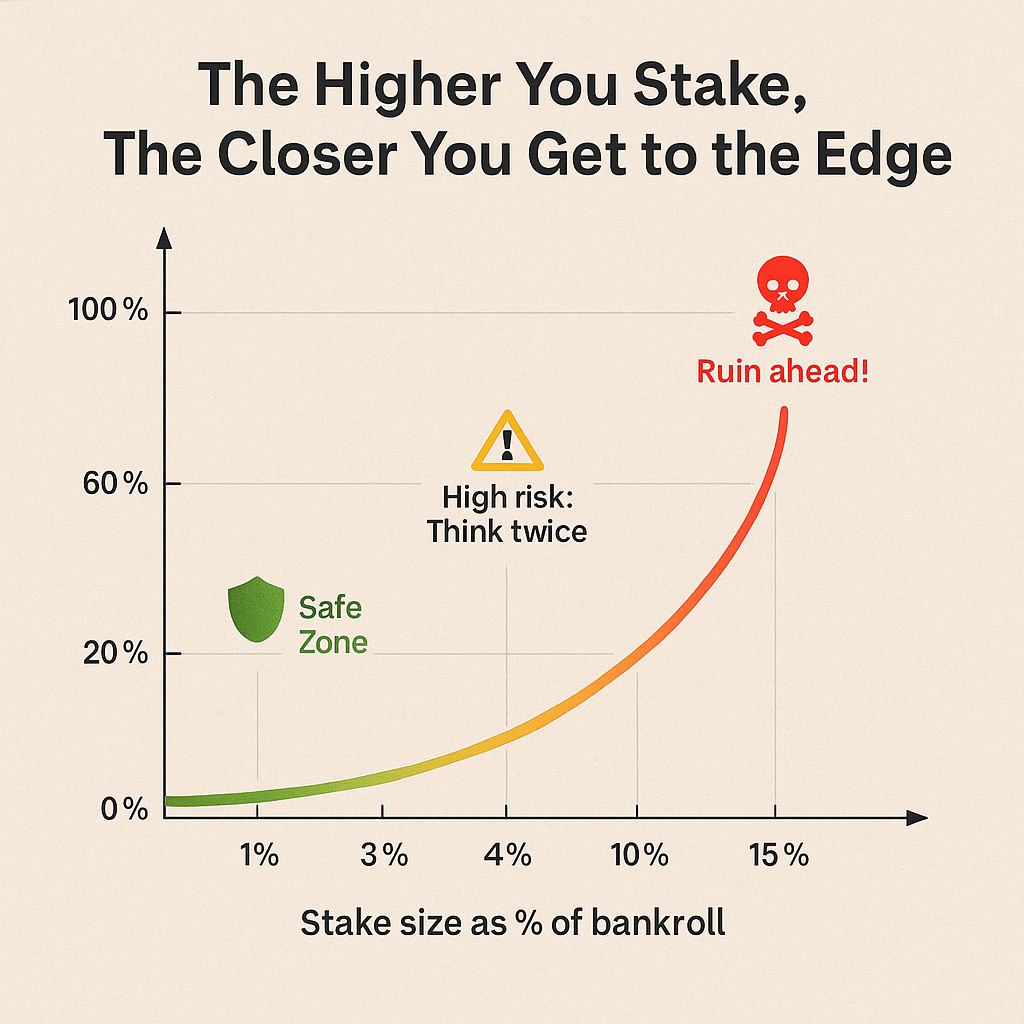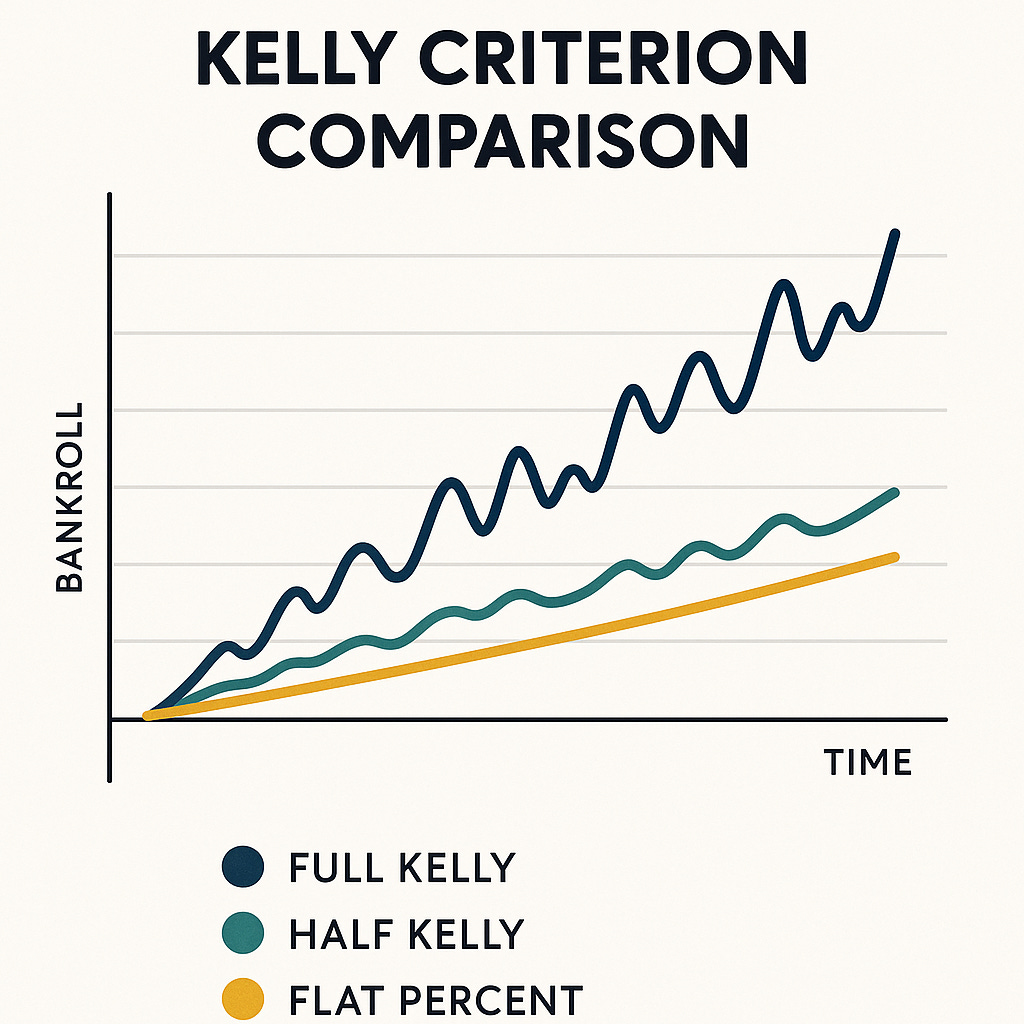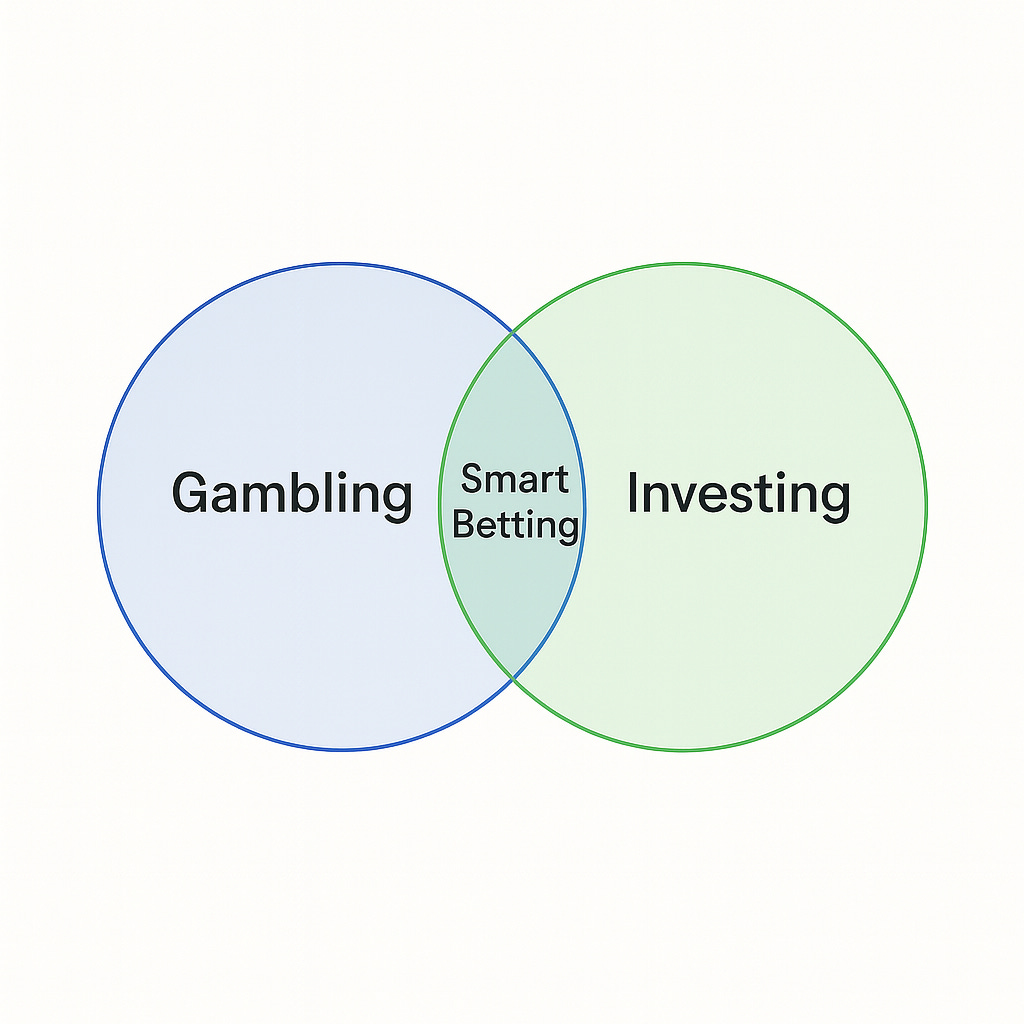Why Most Bettors Misjudge Risk — And How to Bet Smarter
Beating the game starts with surviving it. Most don’t....
🎲 The Illusion of Variance
We all feel it. One weekend you're up, the next you’re down. A pokerlike run: one 10x winner buried by three last‑minute goals. It's wild swings like these that make punters think betting is luck, not strategy. But there's a method behind the madness.
🛟 Risk of Ruin & Bankroll Survival
Risk of Ruin isn't just theory—it’s real.
A $1000 bankroll wiped out by a few huge bets is a wake-up call. Betting isn't poker tournament cash-ins: you wouldn't enter a $100 tourney with just $1,000 reserve—unless you wanted to go bust fast. The same goes for any staking method:
Keep day-to-day bets small (1–3% of your bankroll).
Don't chase big wins—those come sporadically.
Plan ahead—don’t let greed do the betting.
📏 Staking Discipline & Edge Allocation
Structure your bets around edge, not emotion:
If your EV (expected value) is +3%, only bet when it’s +3% or higher.
Use a small fixed stake (e.g. 1–3%) for regular bets.
Save the floating “edge reserve” to strike when big +EV pops up.
When you bet, how much you stake is just as important as what you bet on. These three methods help you size your bets smartly:
Full Kelly: A mathematical formula to maximize bankroll growth by staking more when your edge is bigger.
Half Kelly: A safer version of Kelly—less aggressive, less swingy.
Flat Percent: The simplest method—betting the same % of your bankroll every time, no matter the edge.
Each one balances risk and reward differently. Pick the one that fits your style and nerves.
Full Kelly
Definition: Bet a mathematically optimized fraction of your bankroll based on your edge and odds.
Pros: Maximizes long-term bankroll growth.
Cons: Very volatile—big swings, high stress. You’ll feel every win/loss.
💡 Use only if you trust your edge and can stomach drawdowns.
Half Kelly
Definition: Same formula as Full Kelly, but cut the stake in half.
Pros: Smoother ride. Less aggressive but still efficient.
Cons: Slightly slower growth than Full Kelly—but far more sustainable.
💡 Ideal for sharp bettors with some tolerance for variance.
Flat Percent
Definition: Bet a fixed percentage (e.g. 2–3%) of your bankroll on every bet, regardless of edge.
Pros: Easiest to follow, psychologically stable.
Cons: Doesn’t adapt to stronger/weaker edges—leaves value on the table.
💡 Perfect for beginners or those prioritizing bankroll survival.
🌀 The Variance Trap: Why You Feel "Hot" or "Cold"
Variance is the natural ups and downs in betting….even with a solid edge. It's randomness in the short term.
You might go 3–7 on a weekend and feel cursed.
Or go 8–2 and think you're a genius.
Neither is true. You're just experiencing the natural ebb and flow of outcomes.
“A short-term streak tells you nothing about your edge.
Plan your bets, trust your numbers, and let variance do its thing.”
📋 Why a Betting Plan Beats "Feel"
Emotion leads to impulsive decisions:
Doubling stakes after wins (“playing with house money”)
Chasing losses on Sunday night games
Abandoning long-term strategy after one bad week
Solution: Use a planned betting list.
Pre-select your bets based on data, not vibes.
Assign stakes based on edge and bankroll—not feelings.
Stick to the script, no matter what happens early.
🧠 Mental model: Treat betting like investing. You don’t sell your stocks because Monday was red. You stay the course.
🧠 Bet Smarter, Not Harder
Protect your bankroll—live to bet tomorrow.
Stake based on edge, not emotion.
Use market movements as signals.
Stay disciplined despite variance.
🎯 The Bottom Line
Betting isn’t about hot streaks—it’s about survival, discipline, and edge.
Protect your bankroll, trust your process, and let variance play out over time.
💡 Want to bet smarter?
Track your bets, manage your edge, and avoid the ruin trap with the Bet Journal app.
🔒 Built for safety. Backed by strategy.





